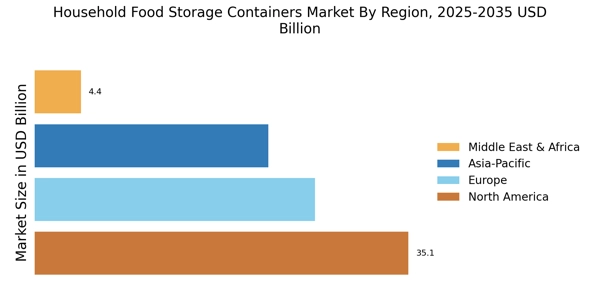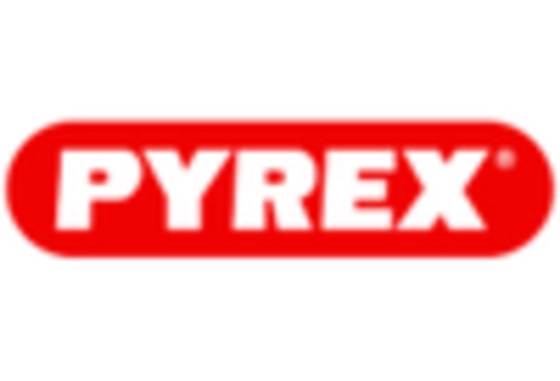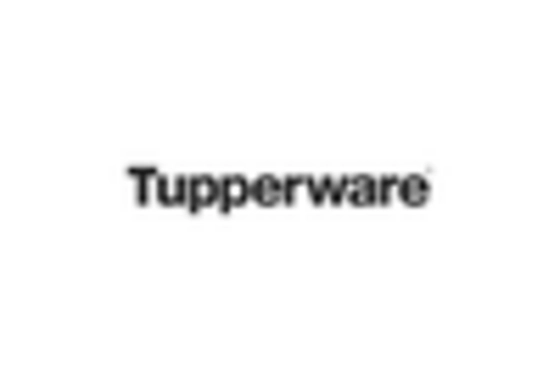Health and Wellness Trends
The Household Food Storage Containers Market is increasingly influenced by the rising health and wellness trends among consumers. As individuals become more health-conscious, there is a growing emphasis on proper food storage to maintain freshness and nutritional value. Research indicates that nearly 70% of consumers are concerned about food safety and quality, prompting them to invest in high-quality storage solutions. This trend is likely to drive demand for containers that are BPA-free, microwave-safe, and designed to preserve food longer. Manufacturers are responding by developing innovative products that align with these health trends, thereby positioning themselves favorably within the Household Food Storage Containers Market.
Growth of E-Commerce and Online Retail
The Household Food Storage Containers Market is significantly influenced by the expansion of e-commerce and online retail platforms. With the increasing penetration of the internet and mobile devices, consumers are more inclined to purchase food storage solutions online. Recent statistics suggest that online sales of household goods have risen by over 30% in the past year. This shift not only provides consumers with a wider variety of options but also facilitates price comparisons and access to customer reviews. Consequently, the convenience of online shopping is likely to bolster the growth of the Household Food Storage Containers Market, as more consumers opt for digital purchasing.
Rising Demand for Eco-Friendly Products
The Household Food Storage Containers Market is experiencing a notable shift towards eco-friendly products. Consumers are increasingly prioritizing sustainability, leading to a surge in demand for containers made from recyclable and biodegradable materials. This trend is supported by data indicating that approximately 60% of consumers are willing to pay more for sustainable options. As environmental concerns gain traction, manufacturers are adapting their product lines to meet these preferences, thereby enhancing their market presence. The emphasis on reducing plastic waste is likely to drive innovation in materials and designs, further propelling the growth of the Household Food Storage Containers Market.
Rising Urbanization and Smaller Living Spaces
The Household Food Storage Containers Market is being shaped by the ongoing trend of urbanization, which has led to smaller living spaces in urban areas. As more individuals and families reside in apartments or compact homes, the need for efficient storage solutions becomes paramount. This demographic shift is driving demand for space-saving and stackable food storage containers. Market analysis suggests that the urban population is expected to increase by 20% over the next decade, further intensifying the need for innovative storage solutions. Consequently, manufacturers are focusing on designing products that maximize utility while minimizing space, thereby enhancing their competitiveness in the Household Food Storage Containers Market.
Increased Focus on Meal Preparation and Planning
The Household Food Storage Containers Market is benefiting from a growing trend in meal preparation and planning. As more individuals adopt meal prepping as a lifestyle choice, the demand for effective storage solutions has surged. Data indicates that nearly 40% of households engage in meal prepping regularly, necessitating durable and versatile containers. This trend is further fueled by the rise of health-conscious consumers who seek to manage portion sizes and reduce food waste. As a result, manufacturers are innovating to create containers that cater to these needs, thereby enhancing their appeal within the Household Food Storage Containers Market.


















Leave a Comment